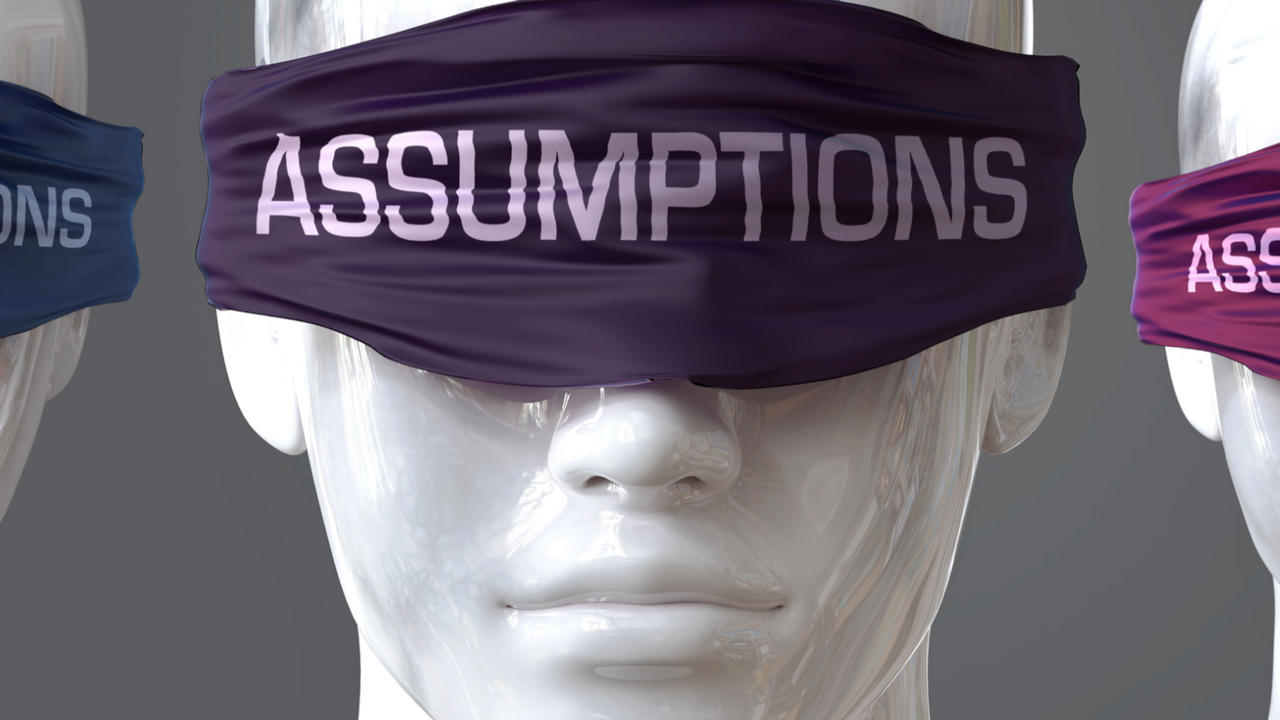How to see the full picture and resist faulty conclusions as a leader

I recently read fictional stories based on real experiences from an Emergency Room doctor. He told a story about a girl who was a meth addict running into the ER with a baby that was almost dead. The addict was a mess with badly scarred arms and missing teeth. And she was not giving any helpful information as to what happened to the baby, causing great frustration among the staff. Just when the child was within a minute of dying, the doctor removed a piece of plastic blocking its airway, bringing the baby back to life.
At that very moment, another woman burst into the treatment room, picked up the baby, and thanked the drug-addicted woman for saving her baby’s life! What?!?! See, this mother was in a parking lot when her baby began to choke, but her keys were locked in her car. The drug addict was in a car nearby with her friends. She quickly grabbed the baby and left for the hospital. The ER staff first saw only an addict. But after seeing the whole picture, they also saw something very different: a life saver.
This story is powerful on so many fronts. But one of the things I was reminded of was to keep looking for the big picture and not just what is easiest to see. As leaders, how can we see a more complete picture of what we are dealing with and decrease the risk of reaching faulty conclusions?
1. Guard against making judgments too quickly.
One of the easiest mistakes we can make is to draw a conclusion too quickly. Just like in the story above, the ER staff looked quickly at the data and reached a conclusion that made sense but was completely wrong.
2. Cognitive biases are very real for everyone, and that means me and you.
A cognitive bias is an error in the way our brains interpret what is happening around us, and yet makes perfect sense at the time. The ER staff had seen enough meth addicts to assume they knew the story unfolding in front of them. But they were wrong.
3. Keep asking yourself, “What may I be missing?”
It only takes a few seconds to resist the instinctive response of reaching a conclusion and instead ask yourself and others if there is something you are missing.
4. Keep in mind, the problem is not always “the problem.”
There are times when we are confronted with a problem, but in reality, it is not the main problem and may only be a symptom. In the story, the addict was not part of “the problem” but was a major part of the solution.
5. Those that are smart, successful, and “experts” may have a harder time.
The more successful and educated we are, the greater the likelihood for missing the big picture and assuming we are correct. The more “correct” we have been over time, the harder it is to think we are “wrong” or are not seeing things correctly.
6. Get the right people into the conversation early.
It’s not how many people you have involved that can result in better problem-solving, it’s having the right people in the room. This includes people who can see different parts of the problem and those who can see it from different angles.
7. Remember the dangers of time constraints and pressure.
When trying to solve a problem, most of us are not facing the pressures that Emergency Room team was experiencing. But we still do experience time constraints which make us far more vulnerable to missing the complete picture and reaching faulty conclusions.
8. Questions and alternative opinions can often be our best friends.
Yes, there are times when they can be frustrating, especially when we are under pressure or ready to move on from it. But it only takes one well-timed question or alternative opinion to reach a far better solution. If no one is sharing alternatives, consider it a possible warning.
9. Have a greater desire to get it right more than be right.
I have been in meetings where a participant seems to be more interested in being right or perhaps the smartest one in the room, rather than getting it right by listening to others. This requires humility but yields great rewards when trying to avoid faulty conclusions.
In their Harvard Business Review article on “The Hidden Traps in Decision Making,” authors John S. Hammond, Ralph L. Keeney, and Howard Raiffa said it well:
“When it comes to business decisions, there’s rarely such a thing as a no-brainer. Our brains are always at work, sometimes, unfortunately, in ways that hinder rather than help us.”
This blog is reposted with permission from The Center Consulting Group, www.centerconsulting.org. The Center Consulting Group is a nonprofit Christian organization with a highly trained staff that is passionate about advancing leadership and organizational health.
Written by Jay Desko, Ph.D. Jay Desko is the Executive Director of The Center Consulting Group and has experience in the areas of organizational assessment, leadership coaching, decision-making, and strategic questioning. Jay’s degrees include an M.Ed. in Instructional Systems Design from Pennsylvania State University and a Ph.D. in Organizational Behavior and Leadership from The Union Institute.

